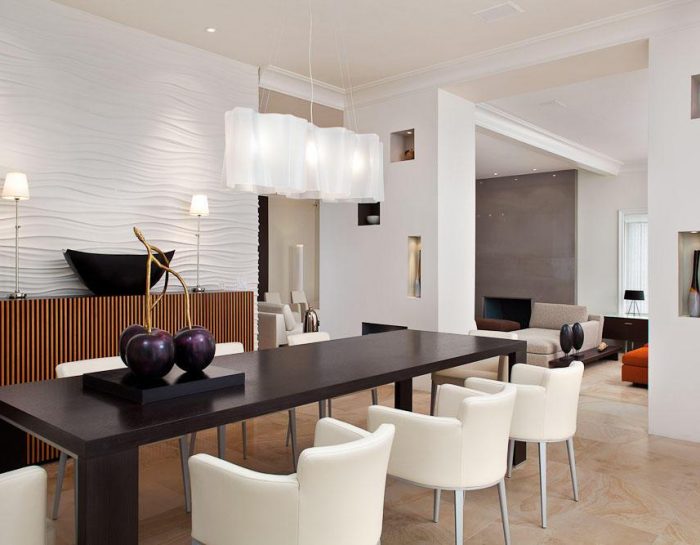Here’s a question that never fails to split homeowners right down the middle – is there a ‘right’ or ‘wrong’ way of going about lighting a dining room? The answer of course depends on personal perspective, but the simple fact of the matter is that if you want your dining room to be the most enjoyable and generally atmospheric place it can possibly be, then the answer is very much yes – there is a ‘right’ way of going about things.
Think of it this way – there’s an enormous and important difference between the overall ambiance created in a stylish restaurant and the general look/feel of a fast-food joint. Not that you’ll probably want to go as far as converting your dining room into a five-star eating establishment of course, but it nonetheless illustrates just how big of a difference to the eating experience the right ambiance and lighting can make.
So assuming you’ve already ticked all the right boxes with your home’s designer outdoor lighting and most interior rooms, just what exactly should you be looking to do specifically to give your dining room the same decadent makeover?
1 – Work With the Table
Well, perhaps the single most important rule is that of choosing light fixtures for the dining room that work with the table itself – NOT the whole room in general. If for example you have a rectangle table, chances are the most effective lighting fixture will be linear in design. And if you happen to have a round table, fixtures like chandeliers and other round fixtures tend to work best. It’s not a case of totally ignoring the rest of the room, but rather one of focusing primarily on the table itself.
2 – Size Matters
Still on the subject of the dining room table, it’s a good idea to ensure that no matter what kind of lighting fixture you choose, it is approximately 30cm smaller than the table in every dimension. In a working example therefore, if you were to have a dining room table that measures 120cm in length, you’d be making sure that the lighting fixture is a maximum of 60cm in length. To overdo things simply results in the whole look and feel of things becoming cramped and crowded.
3 – Dimmers
Never underestimate the impact and importance of dimmer switches when it comes to dining room lighting – something that is all-too often forgotten about entirely. Chances are that the dining room table and indeed the meals served at the table will be different in nature from one time to the next. From busy family suppers to romantic meals for two to the weekly poker game and so on and so forth – all examples of the kind of instances where you will never regret being able to play with the intensity of the light. So regardless of the type of lighting you go for, be sure to install dimmer switches for maximum versatility and convenience.
4 – Up-lighting
There’s a very good reason why most upmarket restaurants rely on things like candles, small table lamps and other examples of up-lighting to keep things illuminated – it is extremely flattering. When light is cast on the face from below and is rather gentle in nature, it does a quite miraculous job in hiding a thousand and one imperfections and various signs of aging. This of course might not be the primary concern that comes to mind when looking to illuminate the dining room at home, but if looking to create that genuinely appealing and cosy dining environment, up-lighting really can make all the difference in the world. So along with the primary sources of lighting you may have in mind, consider alternative and additional lighting sources as well.
5 – Multiple Sources
Building on that point, just as is the case across all other rooms of the home it is important to consider the installation of multiple light sources in order to achieve maximum positive impact in the dining room. Multiple light sources reduce shadows and diminish the need for intensive light sources, allowing the room to be lit gently and warmly instead.
6 – Feature Lighting
Last but not least, remember that there is always the option for adding additional feature lighting around the dining room to highlight any specific items or areas of interest. Whether it’s your favourite paintings on the wall, a particular ornament, the bureau in the corner or really anything else that’s something of a focal-point for the room, try lighting it up with its own dedicated lighting source and see how incredible the impact may be.

